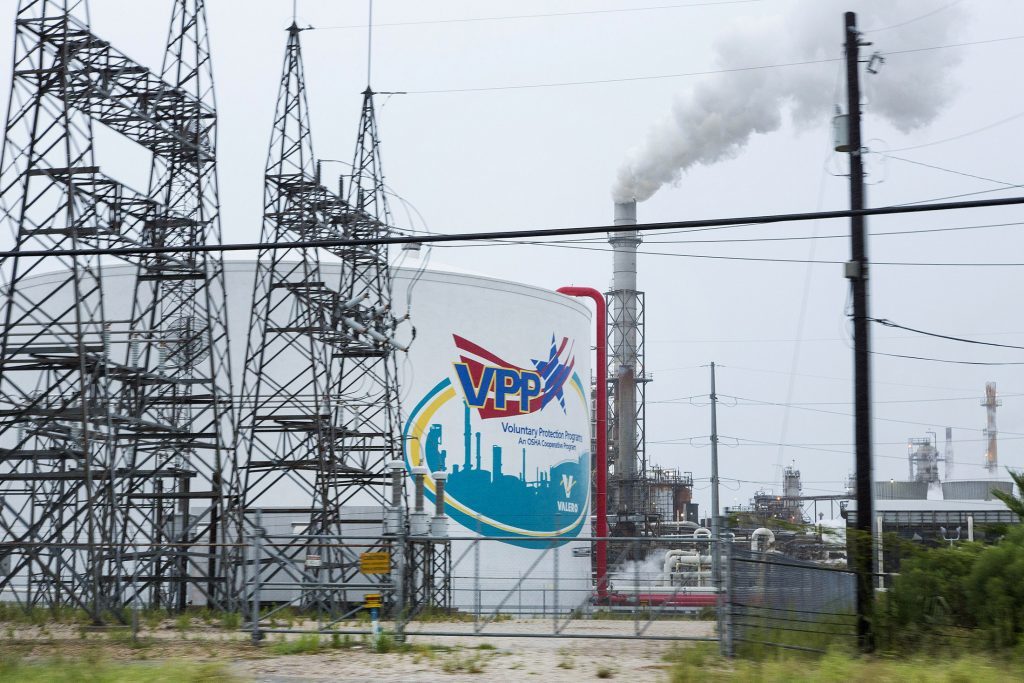
Just as refiners in South Texas are starting to recover from Harvey, the storm is turning its attentions to an area that includes the nation’s largest refinery.
After making landfall Friday night as a Category 4 hurricane, Harvey was downgraded to a tropical storm. Since then, it has moved back into the Gulf of Mexico and strengthened slightly before it’s expected to make second landfall in the vicinity of the Texas-Louisiana border on Wednesday. The storm could bring an additional two feet of rain to Texas and about the same amount to western Louisiana.
As the storm heads toward eastern Texas, Motiva Enterprises LLC’s Port Arthur facility, the largest in the country, is still open but is said to have cut rates as it copes with flooding. And Marathon Petroleum Corp.’s Galveston Bay refinery is said to be shutting because pipeline disruptions have led to the plant running out of crude.
Meanwhile, Valero Energy Corp. and Citgo Petroleum Corp. were said to be preparing to restart their refineries in Corpus Christi after Harvey moved through over the weekend, according to people familiar who asked not to be identified because the plans aren’t public. Valero’s Three Rivers refinery may restart as soon as later this week.
The area near the Louisiana line has 1.65 million barrels a day of refining capacity, including Exxon Mobil Corp.’s Beaumont plant, according to Andy Lipow, president of Lipow Oil Associates LLC. The Beaumont facility has lowered its operating rates because of flooding, according to people familiar.
Colonial Pipeline, the main conduit for gasoline and diesel from the Gulf Coast to the eastern U.S., is already not receiving supply from the Houston area. The loss of refineries around Port Arthur, Texas, would leave only Louisiana refineries supplying fuel to New York and other demand centers.
The region from Houston to Sabine Pass, home to refineries, chemical plants and energy ports, will get anywhere from 10 to 20 inches (24 to 51 centimeters) of additional rain through Friday, according to the National Hurricane Center in Miami. As much as 10 inches could fall in southeastern Louisiana, including New Orleans the lower Mississippi River, which is dotted with grain silos, refineries and port facilities.
Forecasters have issued tropical storm warnings and watches for the coastline from Mesquite Bay to Intracoastal City, Louisiana. A storm surge of as much as three feet could sweep into the coast from Port Aransas to Morgan City, Louisiana, including Galveston Bay, the mouth of the Houston Shipping Channel.
Recommended for you
